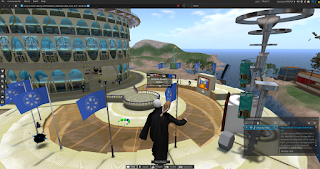MUV601 - Robin Le Couteur - Assignment 1, blog 4 -2018

MUV601 - Robin Le Couteur - Assignment 1, blog 4 -2018 Blog 4 MUVE Viewers - Alchemy The other viewer I investigated is the Alchemy viewer Alchemy is developed by the following team: Drake Arconis | Project Manager | Lead Developer Cryo | Linux Developer | Server Administrator Cinder | Mac Developer Lirusaito | Feature Fox Electron | Designer Alchemy has the base functionality of most viewers like Firestorm, and also has the option to log onto OpenSim grids. In fact, unlike Firestorm, Alchemy actively releases updates for OpenSim which is an advantage over Firestorm. When in world all the movement, build, and other controls are pretty much the same, so there's not really any learning curve. the difference is mainly in the menus and UI stuff After using both Alchemy and Firestorm, I felt like Alchemy was easier to use. The interface feels more modern and more comfortable; it's not too cluttered. I found that there was no issues using the in...



